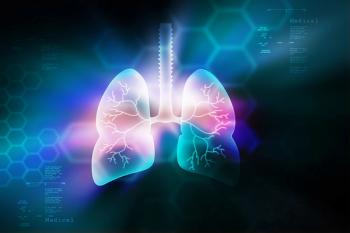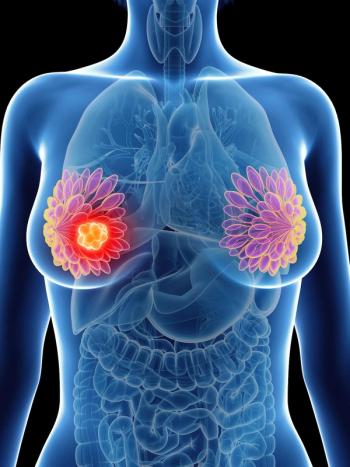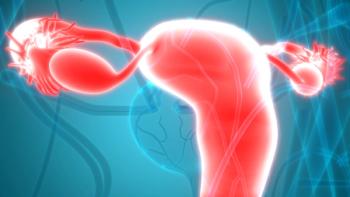
- Oncology Vol 29 No 8
- Volume 29
- Issue 8
The Evolving Landscape of Gastrointestinal Infections in Neutropenic Patients
Diagnosis and management of GI complications in neutropenic patients benefit from the use of collaborative multidisciplinary teams to optimize outcomes.
Sullivan and Moreno address the approach to the diagnosis and management of important gastrointestinal (GI) complications in neutropenic patients, including anorectal infection, neutropenic enterocolitis, cholecystitis, and appendicitis, and they highlight the multidisciplinary nature of the care required in these complicated cases.[1] Since the early descriptions of these entities several decades ago, approaches to diagnosis and management have changed considerably. The number of choices, potency, and spectrum of activity of modern antimicrobials is greater, but antimicrobial resistance is widespread.[2] Surgery continues to be an available option of last resort in selected neutropenic, thrombocytopenic patients. In these high-risk patients, however, the evolving capabilities of interventional radiology are increasingly utilized for drainage of abscesses and to target other lesions. This commentary outlines a few points, but also asks more questions regarding the diagnosis and management of GI complications in this vulnerable patient population.
First and foremost, the presentation of GI complications is influenced by the underlying disease and its treatment, frequently leading to atypical presentations. Notable factors that influence the presentation and course of GI complications include the duration and severity of neutropenia; the use of other immunosuppressive medications, such as corticosteroids or monoclonal antibodies; and the existence of other comorbidities, such as diabetes or autoimmune disease.[2,3] For example, although the classic presentation of neutropenic enterocolitis includes fever, abdominal pain or tenderness, and diarrhea, with bowel thickening noted on imaging,[2,4] neutropenic patients with abdominal pain may instead have small bowel obstruction, Clostridium difficile colitis, appendicitis, or cholecystitis.[5,6] Furthermore, patients with prolonged, profound neutropenia may not exhibit the classic presentation of colitis, but may instead manifest significant, frank GI bleeding.[7] The latter is highly suggestive of mold infection, which is associated with transmural necrosis. Fungal infections have been reported in 6.2% of neutropenic enterocolitis cases, involving predominantly Candida species.[8] An extensive autopsy study at MD Anderson Cancer Center demonstrated GI invasion in nearly a third of cases of Fusarium and Aspergillus infections and in approximately a sixth of cases of Candida and Mucorales infections.[9]
Cholecystitis also may not present with the right upper quadrant pain typically seen in nonneutropenic patients; instead, neutropenic patients can have an atypical presentation in which nausea, vomiting, and abdominal cramping predominate.[6] Appendicitis may occur alone or in conjunction with neutropenic enterocolitis.[10] In children, incidence estimates-based on a single-center retrospective review of appendiceal thickening-were approximately 0.5% to 4%.[10] Autopsy studies, however, suggest an incidence as high as 27% in neutropenic children.[7] In addition, in patients with leukemia, disease infiltration can result in symptoms similar to those of esophagitis, appendicitis, or cholecystitis.[7]
Anorectal infection may be revealed on physical examination, with erythema, pain, and/or induration in the perirectal area. (Note that digital rectal examinations should not be performed on neutropenic patients.) Given the anatomic location and the complex perineal flora, polymicrobial bacterial infection and fungal infection are most common.[4] Organisms are predominantly enteric in origin and include gram-negative rods, enterococci, and yeasts.[4]
MRI, ultrasound, or CT may be used to identify a variety of GI complications in neutropenic patients. Ultrasound is sensitive and specific but varies significantly in accuracy, depending on the expertise of the radiologist and even the medical center, as well as on body habitus.[11-13] CT and MRI also have high sensitivity and specificity. MRI is more costly and rarely utilized, although exceptions are made for patients in whom radiation must be minimized and/or whose habitus may prevent accurate ultrasound assessment.[12,13] The diagnostic imaging of an early perirectal infection can be nonspecific, given the lack of formation of a “mature” abscess in the absence of leukocytes; in place of an abscess, one may find phlegmon or simply generalized inflammation in the anorectal infection.[2] Radiologic criteria are used to diagnose neutropenic enterocolitis; such criteria can also differentiate between early stages of neutropenic enterocolitis (> 4 mm of bowel wall thickening) that are more likely to benefit from conservative measures, and more severe colitis (> 10 mm of bowel wall thickening), which may require surgical intervention or other drastic measures.[2] In patients in whom cholecystitis is suspected, a recent study in bone marrow transplant patients suggests that a hepatobiliary iminodiacetic acid (HIDA) scan is significantly more sensitive than ultrasound or CT.[14] Up to 50% of results with ultrasound were deemed “equivocal,” potentially delaying needed intervention.[14]
The differential diagnosis of patients with GI complications of neutropenia and cancer therapy is broad. Neutropenic colitis, in particular, may be mistaken for cytomegalovirus colitis,[15] C difficile colitis,[5] or even leukemic infiltrates of the colon.[7] Ulceration in the perirectal area, which often fails to exhibit vesicular lesions, suggests herpes simplex virus infection and requires antiviral treatment.[16] Failure to address these possible diagnoses may result in delay in targeted management and also predispose to translocation of organisms, given impairment of skin and mucosal surfaces.
In the management of neutropenic enterocolitis, several principles are critical: avoidance of narcotics and antiperistaltic agents, early and aggressive broad-spectrum antimicrobial therapy, source control when feasible (via interventional radiology or surgery), and, if possible, avoidance of invasive interventions until the neutrophil count has recovered.[2] Given the increasing frequency of multidrug-resistant bacteria, providers should be aware of the local antibiogram and also of the patient’s history, including his or her geographic origin, in order to appropriately target resistant bacteria.[2,4] Antimicrobial regimens should target anaerobes, but avoid redundant treatment with two anti-anaerobic agents, unless C difficile colitis is suspected (for which use of IV metronidazole is prudent in place of other anti-anaerobic agents).[2] Given the prevalence of Candida species as a component of GI complications of neutropenia, including an antifungal in the regimen is critical.[3] Since many patients receive azole prophylaxis in the setting of neutropenia, and since Candida species are associated with 94% of fungal cases of neutropenic enterocolitis, echinocandins (eg, caspofungin, anidulafungin) are recommended to address early translocation of Candida from the GI tract to the bloodstream.[8] If growth factors such as granulocyte colony-stimulating factor and granulocyte-macrophage colony-stimulating factor fail to reconstitute the immune response, granulocyte transfusions have been utilized with mixed results.[2,17] Although they may improve the immune response, the intense inflammation they cause may be destructive, resulting in mucosal compromise. Unless patients have experienced prolonged neutropenia, with continued suppression likely, granulocyte transfusions should be considered cautiously.
If a patient survives an episode, a common concern is whether neutropenic enterocolitis or other GI complication can recur. Is there a recommended approach to prophylaxis? Are there established approaches to determining when to proceed with planned oncologic care? Reported cases of recurrence are rare and are related to structural abnormalities, such as adhesions, that may have been preexisting or that may have developed in the context of an episode of neutropenic enterocolitis or other GI complication.[18] There is no recommended prophylaxis, but repair of any structural abnormality, when feasible, may reduce the risk of recurrence. The question of when to return to oncologic care is of considerable importance, with the term “RIOT” (return to intended oncologic care) recently coined to highlight the improved survival in patients who were able to “RIOT” after minimally invasive surgery for hepatic tumors.[19] The performance of biomarkers, such as procalcitonin, is not currently convincing in defining the appropriate time to proceed with oncologic care in this special population.
In summary, Sullivan and Moreno describe the diverse GI complications that can affect neutropenic patients. Diagnosis and management of GI complications in this special population benefit from the use of collaborative multidisciplinary teams that include specialists in surgery, infectious disease, oncology, gastroenterology, and/or radiology to optimize outcomes. Aggressive surgical intervention should, if possible, await recovery of the neutrophil count. Knowledge is lacking regarding the factors that predispose to perirectal and other complications, which may possibly include type of diet, changes in the microbiome due to oncologic (and antimicrobial) therapy, and host genomics; understanding is also lacking regarding the optimal timing of return to oncologic therapy. Much work remains to be done to better define risk factors for neutropenic enterocolitis and other GI complications, to determine appropriate prophylaxis and treatment strategies, and to develop new, minimally invasive interventions.
Financial Disclosure:The authors have no significant financial interest in or other relationship with the manufacturer of any product or provider of any service mentioned in this article.
References:
1. Sullivan PS, Moreno C. A multidisciplinary approach to perianal and intra-abdominal infections in the neutropenic cancer patient. Oncology (Williston Park). 2015;29:581-90.
2. Nesher L, Rolston KV. Neutropenic enterocolitis, a growing concern in the era of widespread use of aggressive chemotherapy. Clin Infect Dis. 2013;56:711-7.
3. Kontoyiannis DP, Mathur M, Chen YB, et al. Case records of the Massachusetts General Hospital. Case 13-2014. A 41-year-old man with fever and abdominal pain after stem-cell transplantation. N Engl J Med. 2014;370:1637-46.
4. Rolston KV, Bodey GP, Safdar A. Polymicrobial infection in patients with cancer: an underappreciated and underreported entity. Clin Infect Dis. 2007;45:228-33.
5. Vehreschild MJ, Weitershagen D, Biehl LM, et al. Clostridium difficile infection in patients with acute myelogenous leukemia and in patients undergoing allogeneic stem cell transplantation: epidemiology and risk factor analysis. Biol Blood Marrow Transplant. 2014;20:823-8.
6. Badgwell BD, Cormier JN, Wray CJ, et al. Challenges in surgical management of abdominal pain in the neutropenic cancer patient. Ann Surg. 2008;248:104-9.
7. Ebert EC, Hagspiel KD. Gastrointestinal manifestations of leukemia. J Gastroenterol Hepatol. 2012;27:458-63.
8. Gorschluter M, Mey U, Strehl J, et al. Invasive fungal infections in neutropenic enterocolitis: a systematic analysis of pathogens, incidence, treatment and mortality in adult patients. BMC Infect Dis. 2006;6:35.
9. Lewis RE, Cahyame-Zuniga L, Leventakos K, et al. Epidemiology and sites of involvement of invasive fungal infections in patients with haematological malignancies: a 20-year autopsy study. Mycoses. 2013;56:638-45.
10. McCarville MB, Thompson J, Li C, et al. Significance of appendiceal thickening in association with typhlitis in pediatric oncology patients. Pediatr Radiol. 2004;34:245-9.
11. McCarville MB, Adelman CS, Li C, et al. Typhlitis in childhood cancer. Cancer. 2005;104:380-7.
12. Flum DR. Acute appendicitis-appendectomy or the “antibiotics first” strategy. N Engl J Med. 2015;372:1937-43.
13. Kotagal M, Richards MK, Flum DR, et al. Use and accuracy of diagnostic imaging in the evaluation of pediatric appendicitis. J Pediatr Surg. 2015;50:642-6.
14. Bagley SJ, Sehgal AR, Gill S, et al. Acute cholecystitis is a common complication after allogeneic stem cell transplantation and is associated with the use of total parenteral nutrition. Biol Blood Marrow Transplant. 2015;21:768-71.
15. Yeh YM, Chen YP, Wu HC, et al. Cytomegalovirus-related neutropenic enterocolitis with negative CMV antigenemia as the initial presentation in an acute myeloid leukemia patient. Ann Hematol. 2009;88:279-80.
16. Stevens DL, Bisno AL, Chambers HF, et al. Practice guidelines for the diagnosis and management of skin and soft-tissue infections. Clin Infect Dis. 2005;41:1373-406.
17. Cherif H, Axdorph U, Kalin M, Bjorkholm M. Clinical experience of granulocyte transfusion in the management of neutropenic patients with haematological malignancies and severe infection. Scand J Infect Dis. 2013;45:112-6.
18. Maki AC, Bertolone SJ, Bond JM, Bond SJ. Recurrent neutropenic enterocolitis in a pediatric patient. J Pediatr Hematol Oncol. 2013;35:e64-e66.
19. Aloia TA, Zimmitti G, Conrad C, et al. Return to intended oncologic treatment (RIOT): a novel metric for evaluating the quality of oncosurgical therapy for malignancy. J Surg Oncol. 2014;110:107-14.
Articles in this issue
over 10 years ago
Advance Care Planning: We Can Do It!over 10 years ago
Treatment of Peripheral T-Cell Lymphoma: Many Shades of Grayover 10 years ago
ACR Appropriateness Criteria® Resectable Stomach CancerNewsletter
Stay up to date on recent advances in the multidisciplinary approach to cancer.





















































































